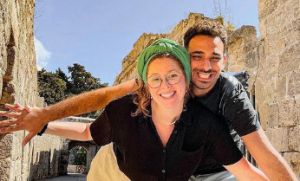Ghanim
Al Muftah, a Qatari YouTube sensation, performed alongside Morgan Freeman at
the opening ceremony of the FIFA World Cup 2022. Freeman, 85, the American
actor, hosted the Qatar opener. On opening day, Qatar are playing Ecuador in
the first match of the tournament.
The
20-year-old Ghanim Al Muftah has a condition called caudal regression syndrome.
When he was born, on May, 5, 2002, doctors had given him only 15 years to live.
However, he rose against the odds and played a number of sports. He has also
climbed the highest peak in Qatar and publicly expressed his desire to climb
Mount Everest.
What
is caudal regression syndrome?
Caudal
regression syndrome is a disorder that impairs the development of the lower
half of a person’s body. The disorder usually affects the lower back, limbs,
the genitourinary tract, and the gastrointestinal tract.
The
caudal regression syndrome disorder, the bones of the lower spine are
frequently missing, and the corresponding sections of the spinal cord are irregular
or missing. Affected individuals may have incomplete closure of the vertebrae around
the spinal cord.
People
with caudal regression syndrome can also have an abnormal side-to-side
curvature of the spine (scoliosis).
These
spinal abnormalities may affect the size and shape of the chest, leading to
breathing problems in some individuals.
Caudal
regression syndrome affected individuals may have small hip bones with a
limited range of motion. People with the syndrome have buttocks that tend to be
flat and dimpled. The bones are usually underdeveloped, most frequently the
upper leg bones (femurs).
Legs
in these individuals are bent with the knees pointing out to the side and the
feet tucked underneath the hips (sometimes called a frog like-position).
However,
abnormalities in the genitourinary tract in caudal regression syndrome are
extremely varied. In some cases, kidneys are malformed, defects outside a
missing kidney (unilateral renal agenesis), kidneys fused together (horseshoe
kidney), or a duplication of the tubes that carry urine from each kidney to the
bladder (ureteral duplication).







